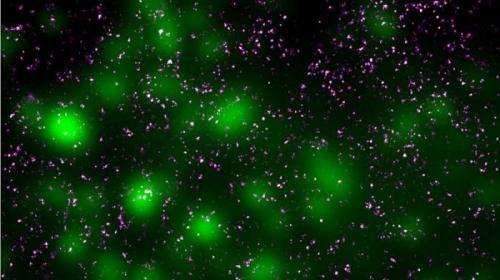Botox proteins could hold cure for diabetes

Scientists believe the proteins that are targeted by cosmetic surgery treatment Botox could hold the secret to treating and even curing Type 2 diabetes.
A team of researchers at Heriot-Watt University is using new molecular microscopic techniques on SNARE proteins to solve the mystery of how insulin release is regulated and how this changes during Type 2 diabetes.
SNARE proteins
SNARE proteins are targeted by Botox treatments, preventing them from helping muscles contract. However, their role goes well beyond the cosmetic realm, such as their work in the human pancreas.
Dr Colin Rickman and his team are observing SNARE proteins in pancreatic beta-cells, the highly specialised cells that release insulin. Within the cells are SNARE proteins, which are the machinery that helps the beta-cells release the insulin to try and stabilise blood glucose levels.
Type 2 diabetes occurs when the beta-cells can't cope with the prolonged high glucose levels of some obese patients and so secrete less insulin. The beta-cells lose both mass and function, but the reasons for this have always been unclear.
The Heriot-Watt team hopes to answer these questions by observing SNARE proteins in the cell for the first time, pinpointing their exact location in an area equivalent to a ten-thousandth of a human hair.
New methods of diagnosis for Type 2 diabetes
Dr Colin Rickman said, "The human body has a system for storing glucose and releasing it when the body needs energy. This system controlled by the release of insulin.
"When a person is obese, which a worryingly high and increasing number of people in the UK are, this system is put under pressure and eventually fails. This leads to Type 2 diabetes.
"We know SNARE proteins are responsible for insulin secretion, but it's still not understood exactly how they do it.
"Once we can understand how these proteins behave in 'normal' circumstances, how they move, how they are arranged in the cell, how they interact with other proteins, we can then compare it with what happens under Type 2 diabetic conditions. This is the first time these proteins have ever been observed in such detail.
"Ultimately this could lead to new methods of diagnosis, prevention of the cells' failure that leads to diabetes and also treatments for Type 2 diabetes."
In 2012, the NHS described diabetes as '... one of the most prevalent and serious chronic conditions currently affecting the UK population'.
From 1996 – 2012, the number of people diagnosed with diabetes increased by 1.5 million. It is estimated that five million people will have diabetes in the UK by 2025, due in part to an ageing population and a dramatic increase in the number of overweight and obese people.
Dr Rickman and his team are funded by the Medical Research Council and the Edinburgh Super Resolution Imaging Consortium (ESRIC), a joint initiative between Heriot-Watt University and the University of Edinburgh.

















